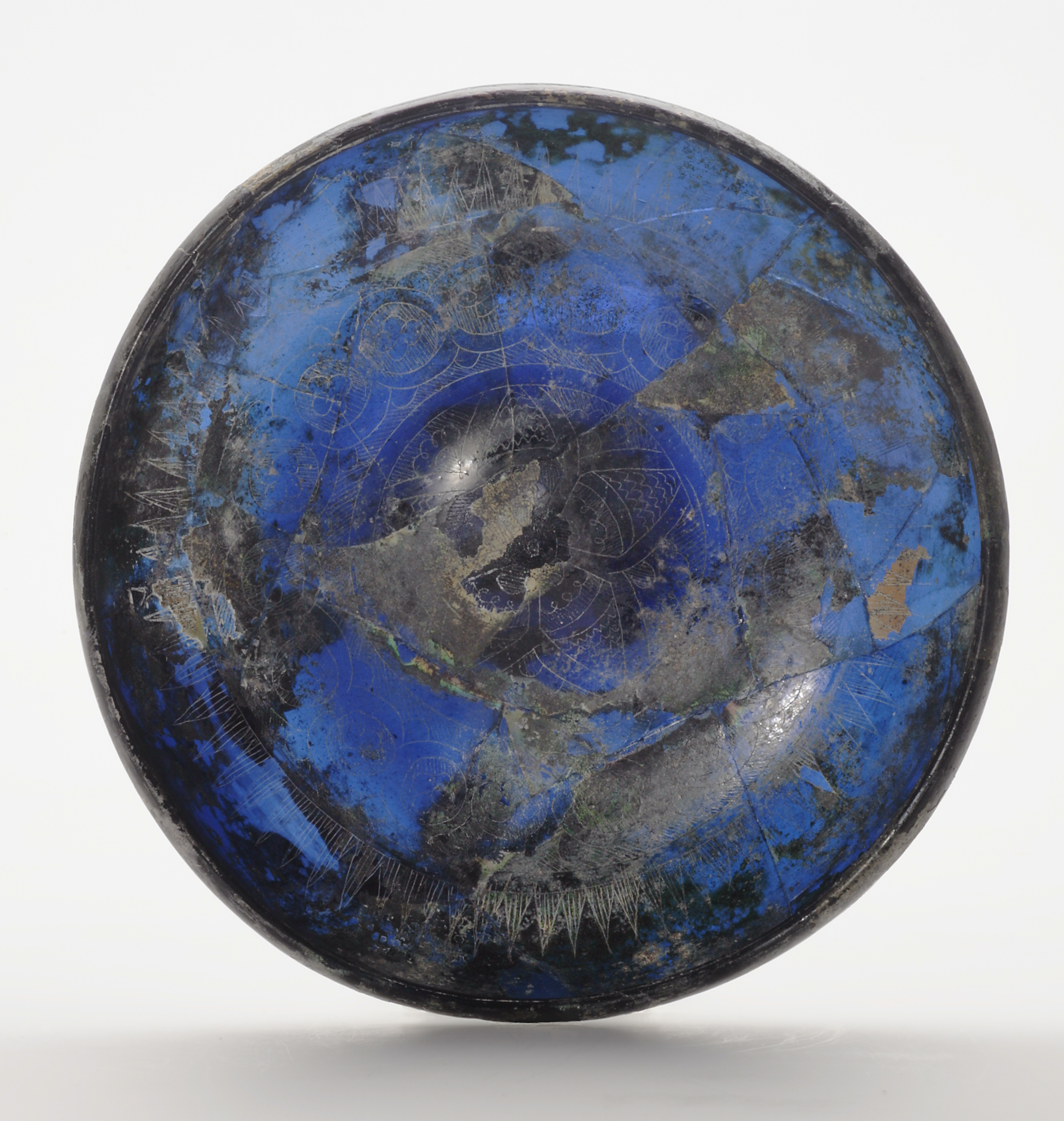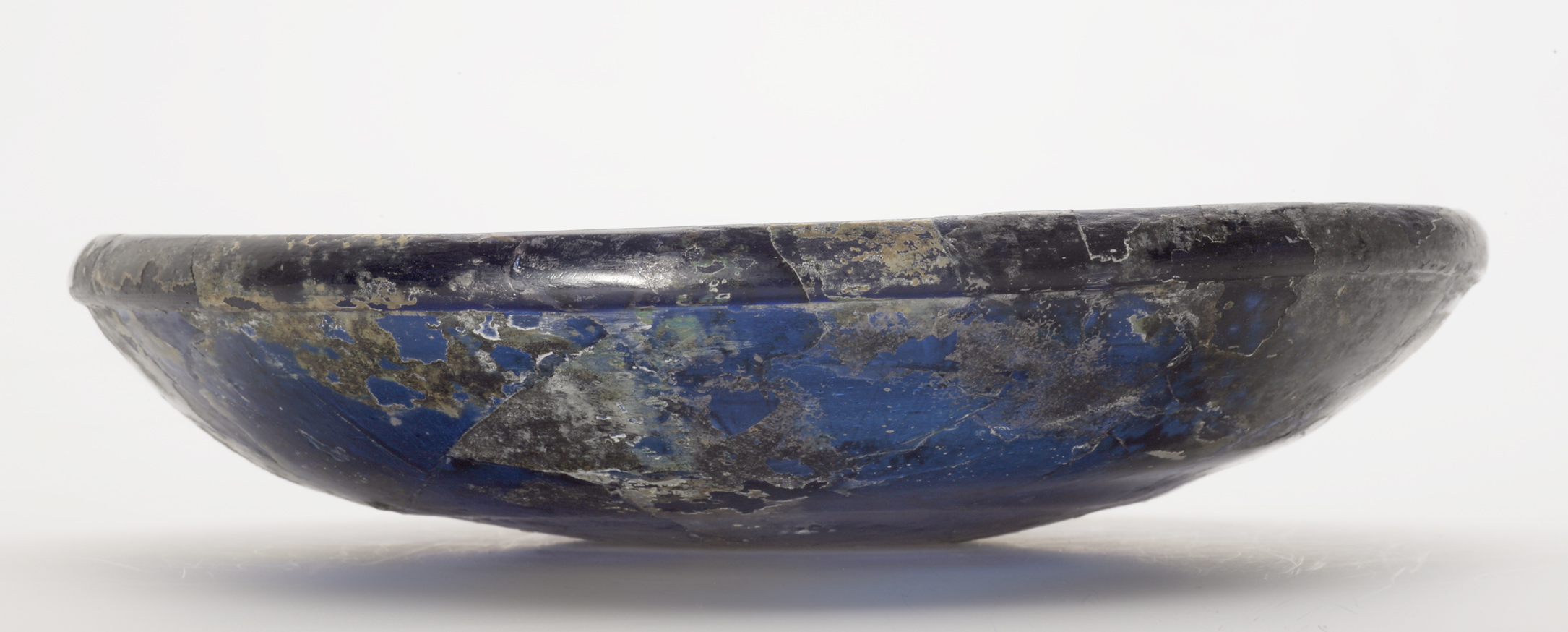 Print Page
Print Page
 Print Page
Print Page
Location: probably Syria
Materials: deep blue glass, blown in a mould, tool-shaped, with scratched decoration
Dimensions: 5.2 x 22.8cm
Accession Number: GLS 601
Other Notes:
The plate is the first intact piece from this important early Islamic glass type to have come to light. The basic design was drawn with something resembling a compass, but the tool appears to have slipped in places so that the successive circles do not join up.
Fragments of this type of scratched glass have been discovered at a wide range of sites in Syria, Mesopotamia, Palestine and Egypt, in the eastern Mediterranean and on the east African coast. Further east, they have come to light at Dvin, in Armenia, at Nishapur and, most spectacularly, at the Famensi pagoda in Shaanxi province in China, which included six blue dishes dating from before 874, when the crypt was finally sealed. Analysis of the glass composition, vessel shapes, glass colour and decorative motifs has shown that one production centre may have been Egypt. A second and more important group was made in Syria or Palestine, possibly at Raqqa in northeast Syria, and from there was exported to distant parts of the Abbasid caliphate and far beyond.
Bibliography:
S.M. Goldstein et al, Glass. From Sasanian Antecedents to European Imitations, The Nasser D Khalili Collection of Islamic Art, volume XV, London 2005, cat.168, pp.150–51.
J.M. Rogers, The Arts of Islam. Masterpieces from the Khalili Collection, London 2010, cat.46, p.55.

